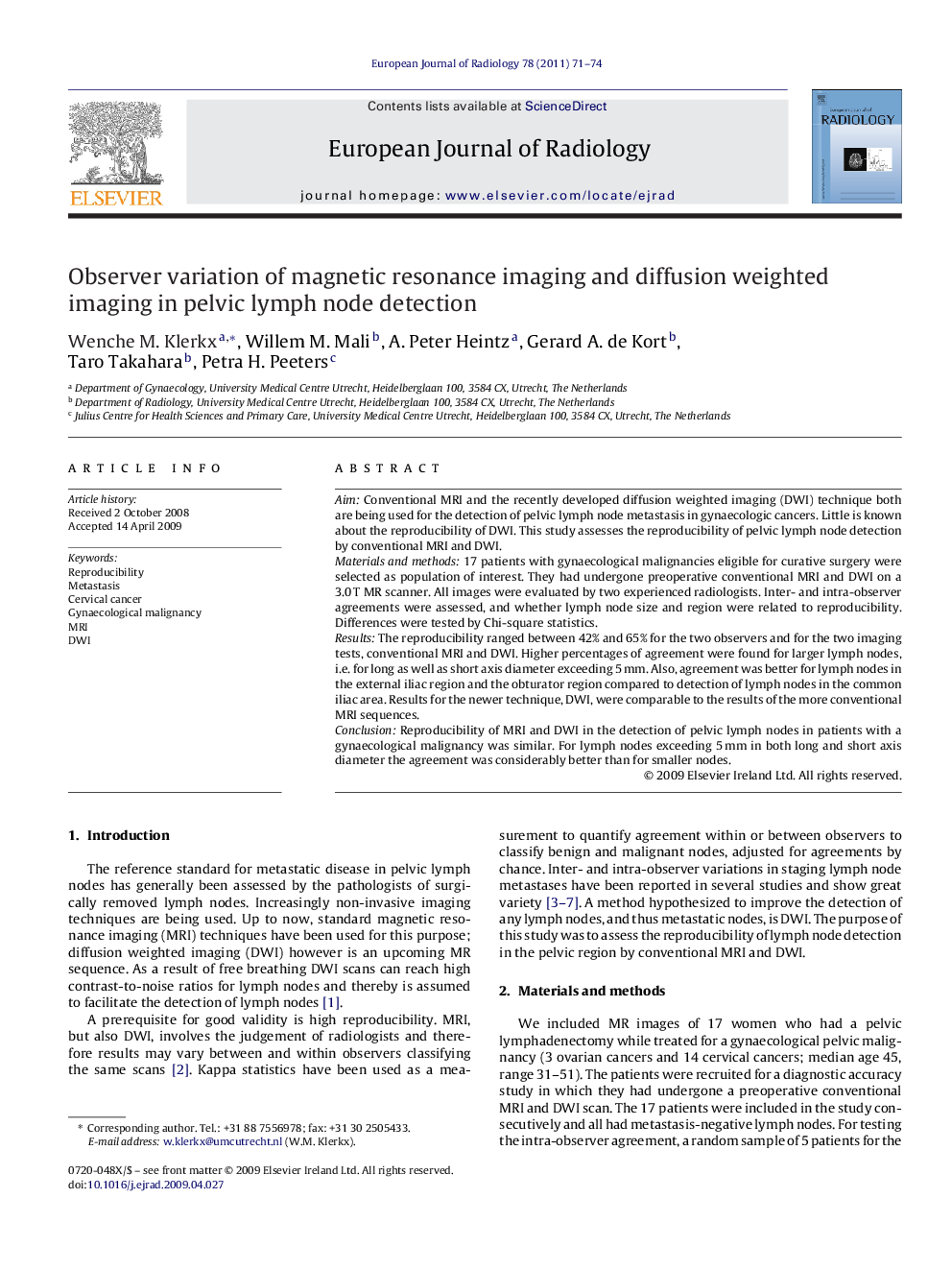| Article ID | Journal | Published Year | Pages | File Type |
|---|---|---|---|---|
| 4227230 | European Journal of Radiology | 2011 | 4 Pages |
AimConventional MRI and the recently developed diffusion weighted imaging (DWI) technique both are being used for the detection of pelvic lymph node metastasis in gynaecologic cancers. Little is known about the reproducibility of DWI. This study assesses the reproducibility of pelvic lymph node detection by conventional MRI and DWI.Materials and methods17 patients with gynaecological malignancies eligible for curative surgery were selected as population of interest. They had undergone preoperative conventional MRI and DWI on a 3.0 T MR scanner. All images were evaluated by two experienced radiologists. Inter- and intra-observer agreements were assessed, and whether lymph node size and region were related to reproducibility. Differences were tested by Chi-square statistics.ResultsThe reproducibility ranged between 42% and 65% for the two observers and for the two imaging tests, conventional MRI and DWI. Higher percentages of agreement were found for larger lymph nodes, i.e. for long as well as short axis diameter exceeding 5 mm. Also, agreement was better for lymph nodes in the external iliac region and the obturator region compared to detection of lymph nodes in the common iliac area. Results for the newer technique, DWI, were comparable to the results of the more conventional MRI sequences.ConclusionReproducibility of MRI and DWI in the detection of pelvic lymph nodes in patients with a gynaecological malignancy was similar. For lymph nodes exceeding 5 mm in both long and short axis diameter the agreement was considerably better than for smaller nodes.
